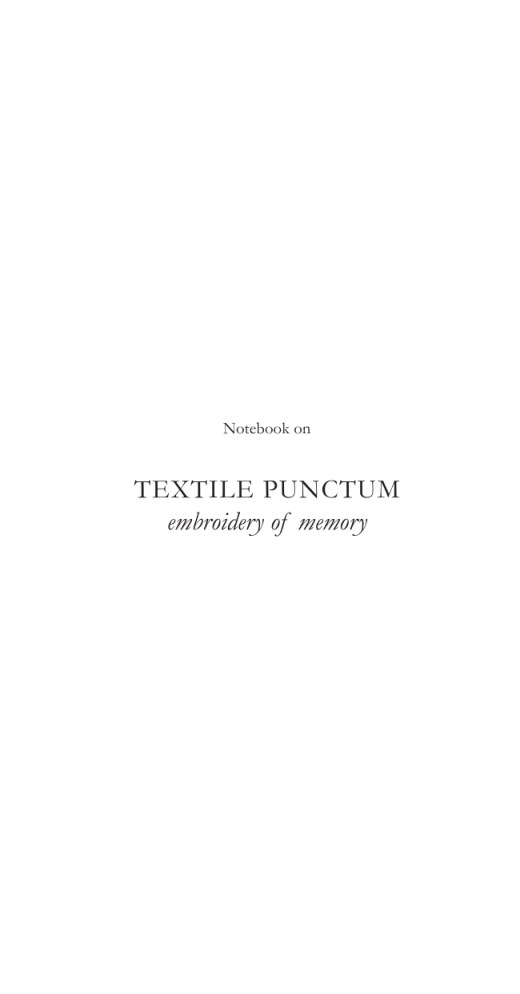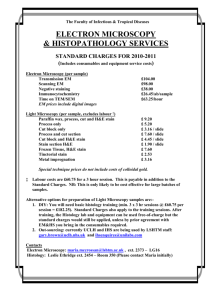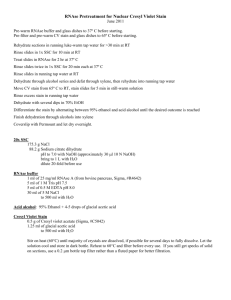TEXTILE PUNCTUM embroidery of memory

Notebook on
TEXTILE PUNCTUM embroidery of memory
/1
2/
Notebook on
TEXTILE PUNCTUM embroidery of memory
/3
© Textile Punctum by Wronsov a.k.a Otto von Busch
copyleft 2005 selfpassage | www.selfpassage.org
Produced 2007 in limited edition, provided together with needle and thread
4/
Clothes never remain a question of pure aesthetics; far too much personal feeling is involved in them. They play such an important part in the delicate business of getting oneself across that it seems impossible to discuss them, for long, objectively.
(Elizabeth Bowen: Collected Impressions, 1950)
1.
One day, quite some time ago, I happened into a memorable situation that resulted in a stain. In this special case it was a wine stain, but it could also have been any stain. The awkwardness of the situation is one part of the memory for a stain is a small wound in your dressed identity, a hole in your fabric-built “armour”, but the framing of the situation as a specific moment in my life is the main part of that memory. The small spectacle that happened the microsecond before the stain was created or perhaps the stain “grew” out of this very moment was just the setting of a larger whole, a period of transformation that
I look back upon as growth.
This moment became something else in my mind. The spectacle around the stain was now a particular milestone in my life, a snapshot or a still life, and the stain a direct indexical sign of a specific moment in this process.
It also happened to be an explicit stain, in the meaning that in that moment attention fell upon the stain itself. Most stains we try to forget and ignore, but that evening this special one became the subject of discussion. It drew attention to itself. The stain was not so much an awkward signifier of the situation as a topic for amiable discussion. It actually came to frame that specific time in my life, as if it was a special chemical liquid that processed my life at that moment or
/5
as if dreams were developed into tangible form through an alchemic process. And the stain was a visual proof, a magical writing, forming an esoteric and readable sign.
I kept it with me, like a treasure, my desire and my grief.
2.
So I decided to make small embroidery along the contours of that stain, preserve it, to keep it from disappearing in the laundry. Small uneven stitches that traced an outline of a fragmented memory. Like a desolate archipelago, stains are often uneven and complex patterns, on an evenly printed sea of fabric. The process became a meditative action in itself, a recollection of the situation and its implications. A practical sorting of impressions and past choices as if I was revisiting and developing the memory with every stitch. The sense of memory is still very clear, as opposed to the lost stain. Now with empty contours, several washes later, it has become one of my favourite garments.
Before we start any further exploration you might wonder what happened after that specific moment in my life. It became history, brutal compared to the coldness of oblivion, but also a pleasurable memory and the contours of the stain are still there. Just as you can fantasize about your other possible lives, lives that walk around invisible in this existing one like ghosts of lost or dead identities.
Likewise these contours of a stain reflect the me that might have been, that faded in the wash, as a promise grown pale in the faded greys of an enigmatic life.
6/
3.
Now much later, I found myself exploring this embroidered stain in a very similar way as Roland Barthes explored Photography after the death of his mother. In Camera Lucida he used his focus on Photography as an instrument to understand a picture of his mother whilst I, partly with the same terminology, try to understand a specific scar of memory on a garment, this discoloured wound of a lost stain.
As Spectator I was interested in Photography only for “sentimental” reasons; I wanted to explore it not as a question (a theme) but as a wound: I see, I feel, hence I notice, I observe, and I think. (p.21)
4.
On my part, this specific stigma of “sentimental” memory grew to become an extended thread of thought. Irregular small stitches around a pale discolouration on a shirt enclosed a field for the poetic channelling of remembrance. A remembrance that was firmly attached to my spine; it was my rudder when in doubt, a deep part of specific self knowledge. I wanted to step back and retrace my footsteps and to examine it more thoroughly.
Let us create a scenario. What would happen if you mark the contours of that wine stain from that awkward dinner party and slowly let the stain disappear in the wash so that no more than a small decorative outline of the embroidered work is left on the garment?
Discreet as a memory, but at the same time as conspicuous as a public monument.
I felt the theories of Roland Barthes in Camera Lucida might provide a fruitful way of focusing a sharper light on the situation but after a closer reading of Camera Lucida it appears that most
/7
of the emphasised examples that Barthes used regarding photography are in fact a description of the photographic representation of clothes. This prompted me to re-examine his concepts and apply them to fashion and clothing as memory and to my embroidered stain in particular.
5.
My experience with this stain evolved into a personal mission. I found that my attachment to this embroidered garment went deeper that just affection and a “Teddy Bear” love. The stain gave life to the garment, but even more to me and became a mark of my presence in life.
So I asked; what if we were all braver and paid special notice to our worn experience as we walk through life? What if we took a deeper interest in the physical biography of our interface in social life? Our clothes are the vehicles that reveal a certain aspect of our personality and shape a mask for interaction, a mask not of distance but of closeness.
I wanted to promote this hands-on remembrance through clothing. To provide a tool for recollection.
Needle and thread.
6.
When Barthes chooses the photographs in Camera Lucida he selects two levels of reading, Studium and Punctum . Studium is where the reader gains his first impression, undertakes a general interpretation of the photograph and usually succeeds in an understanding the basic intention of the photographer. This is, in short, a functional, polite interest. Punctum , on the other hand, is the element that breaks through or punctuates, the studium . It “rises from the scene, shoots
8/
out of it like an arrow, and pierces me” (p.26). It acts like a wound in the system of perception, a sensitive point that disturbs the first perception. Punctum is making a hole, a cut. It goes beyond the controlled mechanisms of communication, acting in a field of creative perception and digging at a very personal level. “A photograph’s punctum is that accident which pricks me (but also bruises me, is poignant to me).” (p.27)
7.
Barthes is constantly on the alert for examples of the punctum experience; strapped pumps and a necklace in one photograph, the Danton collar and bandaged finger in another. He takes it for granted that the photograph is a direct link to its referent; the same light that was once absorbed by the photographic film now hits my eye. Barthes is not occupied with the physical and chemical process or the surface of the paper that lie behind the creation of the photograph. He is looking at the garment for the photographed garment is a direct analogue connection to a real garment.
8.
I found myself deeply affected by this concept of resemblance, of reference as to how we interpret clothing beyond the glossy myth of fashion and how we have particular memories, memories that transgress and pierce the meaning created outside ourselves. I felt a great urge to re-read these concepts and attempt to apply the theories taken up in Camera Lucida directly to clothing and fashion, more precisely the physical form of the fashion system compared to the system of perception. This is not taking a detour over the photographic image, but going directly to the source of punctum itself, in this case my stitched stain.
/9
9.
Studium is an average effect, without special acuity, a participation in the reading that is culturally guided (p.26). It provokes only a general and polite interest – pleasing or displeasing without pricking (p.27).
The studium is in the order of liking , not of loving; it mobilizes a half desire, a demi-volition; it is the same sort of vague, slippery, irresponsible interest one takes in the people, the entertainments, the books, the clothes one finds “all right”. (p.27)
Studium is a transparent order, “a kind of education […] which allows me to discover the Operator ” (p.28) which in Barthes’ case means the photographer. This seems to me quite similar to the way one can trace the order of fashion and the fashion system in clothing. At this level the photograph contains a special indexical knowledge that a medium such as painting does not have. An “infra-knowledge”, supplying a collection of partial objects of interest, specific for a particular point in time, but not seen as special at that moment. As an example, how many of the men photographed by Nadar have long fingernails (p.30).
Studium can shock, Barthes says “shout”, but not wound
(p.41).
10.
When the terminology is applied to and intersects fashion, studium can be read as the key to the mythological intention of the fashion advertisement. The mediated lifestyle is a symbolic and ideological structure of meanings, entirely connected to the mediated representation within a dominant system. However, somewhat contradictorily, there are sub-cultures that are interlinked to the dominant
10/
/11
expression of power. The studium is a link between the physical, or as Barthes calls it “technical” garment, and the vehicle for mediated meaning, the magazine. In his book The Fashion System, Barthes calls these magazines “fashion machines”.
It is the “fashion machines” that shape the formal representation within a commercial structure of social communication.
Fashion is a symbolic order of currency-based interpretation in what is essentially a visual market. Prices, as they do on the Stock
Exchange, are set according to expectations . Fashion has become a visual currency in which the fashion system is the global money market, the magazines the international banks, and the Fashionistas the stockbrokers.
11.
Expansive as it is, punctum is the detail that grows to dominate the whole impression of the photograph. This detail might tell a completely different story than that in the rest of the photograph or the studium , the intention of the photograph. It is in this polyphonic tension and dissonance the full potential of the punctum appears as narrative. Dirty nails in one portrait, strapped pumps or the edging of a collar in yet another arranged photograph. Punctum has the power of expansion; it enriches and adds layers of meaning far above and beyond its original intention.
A detail overwhelms the entirety of my reading; it is an intense mutation of my interest, a fulguration. By the mark of something, the photograph is no longer “anything whatever”. (p.49)
Punctum is not only concerned with personal memory as in the example of the photograph with the detail of the family necklace – (p.53) but also an irrelevant force that can transform interpretation or lead
12/
to a shift of focus. Punctum is in fact a misreading that touches a deeper level, as in an uncoded or misled intertextuality.
12.
When the punctum level of communication is focused on the purely physical aspect as opposed to the fashion aspect of the garment, the lived experience of the fabric itself is suddenly revealed. This means leaving the metaphoric level of studium and entering a state of metamateriality that encompasses the very history and narrative experience of the fabric itself.
Clothing has always owned a dual character of being both a physical “technical” garment, but it also has an equally valid existence as an image, a floating simulation on the surface. According to Barthes studium is little more than a polite interest in the object or image in question or a floating reference to what is “in” or “out” of fashion. It is indeed a functional, polite interest in a garment, and thus a reading of the garment as an image or expectation . The punctum on the other hand is the physical, the sensuality of smell, touch and aging, the very history of the fabric, and in all the creation of a new dimension that seeps into our own particular world.
It is on this physical level that I find the possibility of creating a concept of “poetic exactness” that communicates through attachments and embroidery and seeks a path towards the poetics of visual materiality. Small stitches, outlining a stain, speak of authenticity, but also of the unseen and unspoken.
/13
14/
13.
Punctum embroidery manifests itself as an indexical sign of memory and acts as an anchor of the representative physical encounter with reality. It is a historical mark, a monument that denotes the point where identity assumed material form.
14.
The act of embroidering the outline of a stain is to allow the memory of the embroidery to become an integrated part of the garment,. It is not to let the marks and stains of life be washed away, with the sole remaining record of its existence being in an album with its arranged pictures or to be faded and filtered by memory. The textile punctum adds the contours of memory to the physical garment, leaving traces of the stain to be interpreted by the observer and to act as a catalyst to other situations and a point of contact, an unstated communication to other personal history and experience
15.
There is of course the matter of the “Teddy bear factor” in clothing.
The Teddy bear that is so much a symbol of comfort and cosiness, and this is where the focus must be directed to the stories and emotional position of the specific garment which has now placed itself at a firm distance from the ephemeral system of trends and fashion. The
Bear has its own intrinsic value that has absolutely nothing to do with what the magazines tell us we ought to treasure. It is thus clear that our “stain embroidery” not only to allows us to regard our clothes with interest and affection long after they have gone out of fashion, but also provides us with a powerful visual presence that increases with age.
Punctum embroidery can create a teasing representation for the unheard voice of memory.
/15
16.
In this sense such embroidery is a highly personal affirmation of memory in which the logical conclusion must be that it is the wearer alone whom must decide the “true” story and value of a garment.
17.
In front of the lens, I am at the same time: the one I think I am, the one I want others to think I am, the one the photographer thinks I am, and the one he makes use of to exhibit his art. In other words, a strange action: I do not stop imitating myself […]
I invariably suffer from a sensation of inauthenticity […] (p.13)
If fashion is engaged in a complex form of imitation, punctum embroidery works in exactly the opposite way. The memory of the stain imposed onto the second skin that is our garment becomes a wearable anchor in a very specific situation. This in turn re-enacts the specific role or our state of mind at the moment when our most remarkable stain first came into being.. This might not be any more
“authentic” than any other aid to memory, but if it brings forth a pleasurable memory the stain might prove to be a steady rudder in times of stormy waters. The contours of the stain we bear implants a role, a memory of that moment, and the direction in which our life was heading.
18.
A punctum embroidery is the intersection of two orders: the stain that is a physical sign of life, and the process of marking the stain.
16/
The process of marking leaves traces of a reflection, or even the sum of recollection and meditation over the former experience that once produced the stain. A ritual.
19.
Punctum embroidery produces the same paradox as in photography insofar that the treatment of the stain is a mark of permanence. The photograph is a live, albeit posed, moment of a person or situation, once present but now long gone. It is a ritual or gesture frozen in time whilst at the same time almost gives an illusion of eternal life.
The photograph is a frozen microsecond, something for memory, but regarded by the beholder as if he had been present on that particular occasion and that precise moment in time.
With the passing of time, the embroidery that is the memory of the stain freezes into an enduring abstract form that frames no more than the stain itself for we may not find the memories that other stains bring to mind particularly agreeable. The memory of a situation is given a physical contour, which also freezes into a memorial for that memory. The contour frames memory into the specific subjective form it had when embroidered, which was also a time of meditation and recollection.
20.
From the moment of birth the contours of the stain mark the missing being for even at inception the stain possessed elements of life.
That life is now missing, but on the occasions I do notice the stain the discrepancy in time is all too evident. As light from distant stars takes ages to reach us, the embroidered stain touches me through
/17
the direct transfer of a period of time that stretches out to me over a distance of years. The physical presence of the stain is a true mark of memory, dreamlike, but shining here and now into the recesses of my mind, tangible for my senses as the first principles of true metaphysics.
21.
Taking a photograph of an urban landscape as an example, Barthes stresses the importance of the feeling of something that is habitable, but not visitable; “I want to live there” (p.38). Exactly this same feeling is central to the experience of clothing and fashion in the relation of the desire of the skin to the wearability of the garment. As we see ourselves wearing it, we see how it might look on us, when we wear and live in it even if it is no more than a daydream. Daydream or no, we connect to it, relate to it, our very spirit inhabits it, even if we do not always wear it or even own it. The link is always with the body, to the sensation of skin and the form and figure of the body. Even if it is only a product of our imagination, when we see photographs of clothes, clothes that are attached to bodies, they seem to radiate a corporeal attraction in relation to our own physical being.
22.
Is History not simply that time when we were not born? I could read my nonexistence in the clothes my mother had worn before
I can remember her. There is a kind of stupefaction in seeing a familiar being dressed differently.
[…] This is the only time I have seen her like this, caught in a History (of tastes, fashions, fabrics): my attention is distracted from her by accessories which have perished; for clothing is perishable, it makes a second grave for the loved being. (p.64)
18/
Like the photograph the embroidery becomes a mediator of truth.
The stain was there as a physical mark, a unique trace, but now it is gone, disappeared into History. The garment was seized by a specific moment, was given the imprint of a precise instant in time, became anchored by an act of remembrance and has now succeeded in extending its life into the present. It did not perish, was not consigned to a second grave. On the contrary, the embroidery allowed the rebirth of the garment.
23.
There are many differences between photography and a stain on a garment, not least in the difference of intention.
As a rule, we do not want to get a stain on our clothing just in order to feel awkward about it. Every stain does not have a history. Indeed, most of them are accidental and remain unnoticed but when I compared the relationship between Barthes’ unique photograph of his mother and my embroidered stain, I realized how these two relationships involved something that was truly metaphysical. These relationships open hitherto unexplored avenues not only to a broader spectrum of the life experience, but especially to depth and density at certain points in life. We bear with us the petrification of a reality we can no longer touch.
24.
As a bullet hole in a garment I saw at a museum irrevocably changed the life of the wearer, there is an undisputable truth in my particular stain. I was there in this garment when something happened to each side of the hole, on the inside and on the outside. It was a physical passage to the immateriality of life itself, the creation of a situation in which I found that I had redefined myself. Quite simply, this event changed my life.
/19
25.
Barthes forwards a convincing argument as to how photography is connected to death. A future death becomes history. In the photograph of the man condemned to death, the man knows he is going to die and when we look at the photograph is long since dead. The photograph records a passage in time, a passage between life and death.
“The punctum is: he is going to die.
I read at the same time: This will be and this has been […]” (p.96) When I visit museum exhibitions showing old clothes, I find I cannot avoid a feeling of mortality for these clothes, for clothes are not gold goblets plates or silver soup spoons but highly personal articles once worn by people who had been mothers and fathers, friends and lovers.
This sense of a very personal mortality is especially strong when I see ladies dresses that once were white but now have this very beautiful shade of aged ivory. An extreme example of this transience of the human body and the delicate frailty of the garments they wore can be seen in the lovingly swathed Egyptian mummies. Their skin has turned to the colour and texture of parchment, but in their exquisite robes they still give every appearance of laying on a lit de parade .
These garments were once the true face of an identity, something someone wore and said: “this is my style” or “this is me”. Now they are but empty shells, for the wearer, both body and spirit, and her fashionable clothing that was so much a brave banner of her zeitgeist are all gone. Now a curiosity at a museum, they are just a dry historical expression of style but say nothing about the vivid ritual of fashion for which they were once the sacrament.
It is always interesting to leaf through the fashion magazines of yesteryear but these images are always dead as in the same sense as are the persons on the Barthes’ photographs. We can see
20/
that these garments were once a clear fashion statement, but their energy lay in the projection of expectations they represented .
They say nothing of the energy and life that once flowed through them.
26.
Fashion is a strong force, often greatly underestimated and derided, in society. Fashion, ever-changing, being analysed, interpreted and reinvented, is the sturdy bearer of our imagination, creative impulses and projection of our dreams. However, these dreams and expectations must exist within an understood frame of reference.
Framing this concept of fashion are the borders of what is considered to be the latest look or what should be sent to the nearest charity shop, and consciously or subconsciously fashion moulds our sense of self. Even if we claim that we care little about this autumn’s collection, indirect pressure from peer groups or our own natural vanity makes us more responsive to fashion than we either know or care to admit.
The concept of what we wear, in other words fashion, is so strong that at one time or another we have all cringed when confronted by a photograph taken in the past a year or so. “How could I have looked like that ?, we exclaim, and effectively turn our backs on ourselves as we once were.
The strength of fashion lies in its ephemeral nature and the short life is the very essence of its manifestation. This is the Janus face of fashion, This expression will soon die, the span of the extremely short life followed by a quick passage to oblivion or into a prestigious afterlife in the nearest museum.
By projecting meaning into the fashion system we constantly renew and redefine ourselves. We can leave the unwanted detritus of our life behind to become who we want to be. The process of
/21
dressing is often made alone in front of the mirror. It is here that you must decide which side of your identity is the most appropriate for the particular dream or expectation of your nearest hours, you dress for a party, an important interview, a journey full of expectations and promises. You dress for the coming now.
Lovely, you are all set to go, and now is time for the test of cold reality. Will it work?
Of course, you can always ask a friend to come to the dress rehearsal, although this can be fraught with danger. “Is this me?”, you ask, holding your latest acquisition up in front of you.
Not really, love.
27.
As we create our identities in relation to others, so do our clothes express ourselves in relation to others. You can enter a room with your new skin on, feeling glamorous, the cat’s whiskers and absolutely on top of world. Forget it, for the dethronement is quick and brutal when a few minutes later the latest glamour puss comes through the door with, my dear, wearing an absolutely fabulous rag. “Wearing, just about”, you think sourly in the second before you feel like an ancient crone, an old hag waiting for the grim reaper. You suddenly remember that Pierre Cardin once produced a collection with dresses made of paper, arguing that no real fashion can be worn twice. How right he was.
This skin is going to die.
22/
28.
This stain is proof of existence. The stitches outline the wound from a large injury I caused. The scar is a brand of grief but also one of healing.
Procession moves on the shouting is over.
Praise to the glory of loved ones now gone.
/23
Literature:
Barthes, Roland: Camera Lucida (1980), Hill & Wang, New York, 1981
(image examples from this book)
24/






